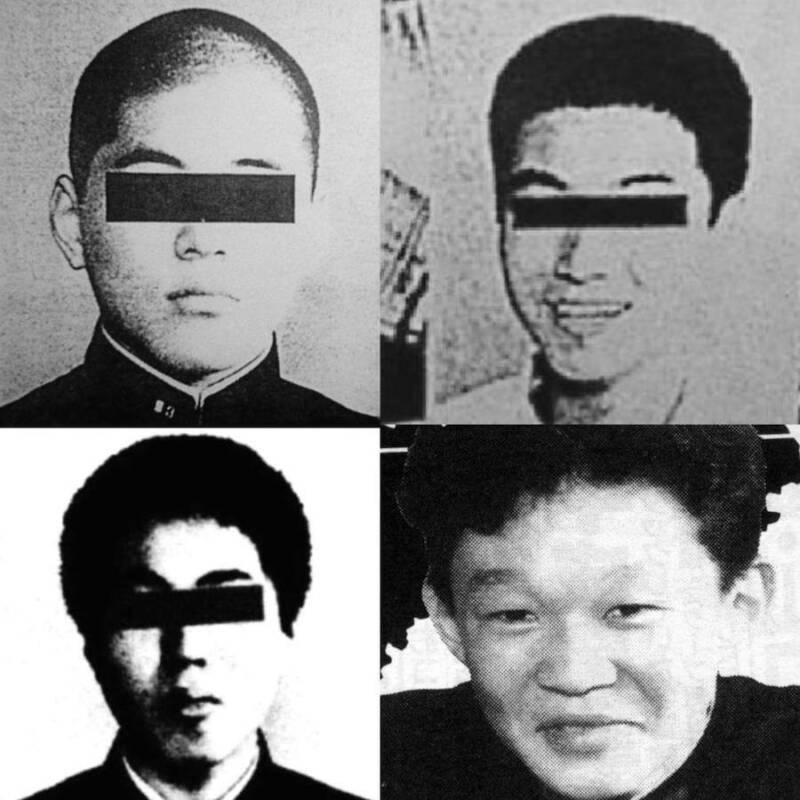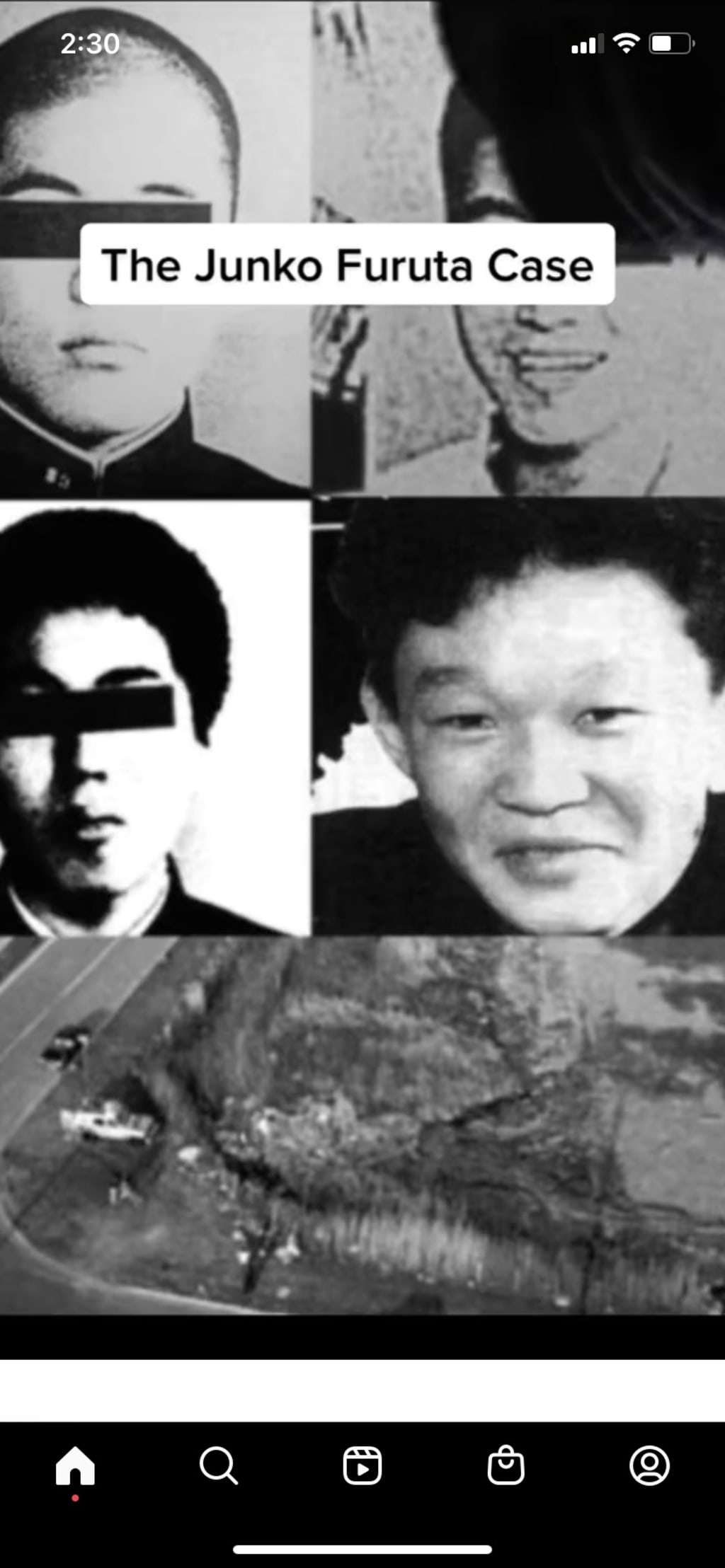The Disturbing Truth: Inside The Junko Case & Its Aftermath
Could a teenager's horrifying ordeal, culminating in an act of unspeakable violence, expose the darkest corners of human depravity? The "Junko Case," a chilling narrative of prolonged torture, sexual assault, and murder, stands as a stark testament to the depths of cruelty one human being can inflict upon another, and the shocking indifference displayed by some in the face of such brutality. This case, a brutal reminder of the fragility of life and the capacity for evil, continues to reverberate through discussions of justice, societal responsibility, and the insidious nature of violence.
The details of the "Junko Case" are difficult to stomach. What happened to Junko Furuta, a young woman from Japan, transcends the realm of ordinary crime. It isn't merely a story of a single, isolated act of violence; rather, it's a prolonged and agonizing descent into terror. It's a story that necessitates a deep and unflinching examination of the perpetrators' motivations, the environment that allowed such atrocities to occur, and the lingering questions about the efficacy of justice in the face of such profound evil. Her story, marked by almost unimaginable suffering, is a haunting reminder of the importance of protecting the vulnerable and speaking out against abuse in all its forms.
| Category | Details |
|---|---|
| Victim's Name: | Junko Furuta ( ) |
| Age at Death: | 17 years old |
| Nationality: | Japanese |
| Date of Birth: | January 18, 1971 |
| Location of Crime: | Tokyo, Japan |
| Period of Captivity: | Approximately 44 days (November 25, 1988 January 4, 1989) |
| Key Perpetrators: | Hiroshi Miyano, Nobuharu Minato, Yasushi Hiroyama, and Mitstuhiro Watanabe |
| Nature of Crimes: | Kidnapping, prolonged torture, rape, sexual assault, battery, and murder |
| Sentencing: | The main perpetrators received sentences ranging from 7 to 20 years in prison; some of these sentences were later criticized as being too lenient considering the severity of the crimes. |
| Notable Aspects: | The extreme brutality, the length of the ordeal, and the perceived leniency of the sentences, as well as the fact that some of the perpetrators were juveniles. |
| Legal and Social Impact: | The case sparked outrage and debate about juvenile justice, the role of the community in preventing crime, and the handling of violent crimes in Japan. It also raised questions about media coverage and the portrayal of violence. |
| Legacy: | The case remains a symbol of extreme violence and a cautionary tale about the dangers of unchecked cruelty and the importance of protecting vulnerable individuals. It continues to be referenced in discussions about justice, crime prevention, and the psychological impact of trauma. |
| Reference: | Wikipedia - Murder of Junko Furuta |
The abduction of Junko Furuta in late November 1988 marked the beginning of an unimaginable nightmare. Forced into captivity by a group of young men, her ordeal unfolded in a suburban home in Tokyo, becoming a crucible of relentless physical and psychological torment. The perpetrators, led by Hiroshi Miyano, Nobuharu Minato, Yasushi Hiroyama, and Mitstuhiro Watanabe, initiated a campaign of brutality that would last for weeks, evolving into a litany of cruelties that are almost impossible to comprehend. The initial act of kidnapping quickly escalated into a sustained period of abuse, where any semblance of human decency vanished. The details, often relayed through court records and survivor accounts, paint a picture of sustained abuse, sexual assault, and deliberate degradation, a testament to the depths of human depravity.
- Search Issues Aditi Mistry Whats Trending Now Google Discover
- Is Hdhub4u Safe Risks Alternatives More Movie Download Guide
The environment in which Furuta was held captive fostered an atmosphere of fear and isolation. The perpetrators, fueled by a twisted sense of power and a complete disregard for her life, subjected her to a relentless barrage of physical and emotional abuse. Everyday was a struggle for survival, a desperate attempt to endure the escalating violence and find some semblance of hope. The perpetrators controlled every aspect of her life, denying her basic needs and further dehumanizing her through their actions. This sustained degradation and the lack of any respite is perhaps one of the most agonizing aspects of this case.
The perpetrators of the "Junko Case" were young men, some of whom were still minors at the time of the crimes. Their actions represent a complex interplay of factors, including a warped sense of entitlement, a hunger for power, and a profound lack of empathy. The absence of remorse, displayed both during the trial and in the aftermath, reflects the profound moral and psychological damage they had inflicted on themselves and on Junko Furuta. The motives behind their actions are a source of ongoing debate; however, the consensus points to a blend of factors, including their own insecurity, the desire to exert dominance, and the influence of a culture that perhaps failed to adequately address or condemn such behavior.
The community surrounding the crime also bears a share of responsibility. The neighbors were aware of the noises and the events taking place in the house but did not intervene, either out of fear or a lack of awareness. The silence of the community is, in itself, a damning indictment of the social dynamics that permitted such atrocities to continue. The lack of intervention underlines a chilling truth: that horrific crimes can be carried out with a degree of impunity, even within a seemingly ordinary neighborhood, when those around refuse to acknowledge or act upon clear signs of abuse.
The trial of the perpetrators brought the details of the case to the forefront, exposing the full extent of the brutality Junko Furuta had suffered. The court proceedings, however, were marred by controversy. The sentences handed down, which ranged from relatively short prison terms to longer sentences, were widely criticized as being too lenient, given the gravity of the crimes. The legal outcome and the debate about the justice system's response to such cases highlights the limitations of the law in adequately addressing acts of extreme violence.
The aftermath of the "Junko Case" has left an indelible mark on Japanese society, igniting public debate about juvenile justice, the role of the community in preventing crime, and the response of the justice system to violent crimes. The case brought attention to how the legal system handles crimes committed by minors and the need to reevaluate sentencing guidelines, considering the heinousness of certain crimes, irrespective of the perpetrators' age. The case continues to be referenced in conversations about crime prevention, the psychology of violence, and the enduring impact of trauma on victims and their families.
The case also triggered discussions surrounding the media's coverage of the incident. The manner in which the story was presented and the language used to describe the events became subjects of controversy. The case highlighted the importance of responsible journalism and the need for media outlets to approach sensitive subjects such as sexual assault and violence with sensitivity and respect for the victims. The media played a significant role in shaping public opinion and in influencing the discussions about the case.
The "Junko Case" is a haunting reminder of the capacity for human cruelty. It forces society to confront uncomfortable truths about the nature of evil, the importance of protecting the vulnerable, and the imperative to address societal issues that may contribute to the normalization of violence. The cases enduring legacy lies in its ability to force us to consider the depths of human darkness and the urgent need for preventive measures and justice for those who have suffered.
The story of Junko Furuta, in its brutal detail, serves as a cautionary tale about the dangers of unchecked cruelty, the importance of community vigilance, and the enduring impact of violence. The case remains a stark warning that underscores the need for continuous efforts towards creating safer communities, addressing the root causes of violence, and providing support for survivors of trauma.
In reflecting on the "Junko Case," it becomes evident that there is no simple resolution or easy answer to the questions it raises. It serves as a persistent challenge to our sense of morality, our understanding of justice, and our commitment to creating a society that protects its most vulnerable members. The brutal nature of the crimes and the profound suffering experienced by Junko Furuta continue to compel us to seek greater understanding of the forces that fuel such acts of violence, and to strive for a world where such atrocities are never repeated.
The "Junko Case" is a complex narrative that highlights the importance of individual responsibility and the role of society in preventing similar tragedies from occurring. By studying the circumstances surrounding this horrific crime, we can gain a deeper understanding of the factors that contribute to violence and abuse, and develop more effective strategies for prevention, intervention, and support for victims. The details are both difficult to comprehend and essential for fostering a society where the safety and well-being of every individual are prioritized.
The case also underscores the lasting impact of trauma on victims, their families, and society as a whole. The enduring effects of the violence experienced by Junko Furuta emphasize the necessity of comprehensive support systems for survivors, including mental health services, legal assistance, and compassionate care. The long-term implications of such trauma highlight the importance of investing in resources to address the psychological consequences of violence and to facilitate the healing process.
The "Junko Case" challenges society to examine the limitations of justice, the role of law enforcement, and the need for more effective mechanisms to prevent and respond to violent crimes. The legal proceedings in this case brought the crimes to light, but the sentences handed down raised critical questions about the nature of justice and its ability to adequately address the extreme acts of cruelty. The case emphasizes the need for a continuous review of legal and social frameworks to ensure that justice is served and that victims receive the support and protection they deserve.
The events associated with the "Junko Case" continue to serve as a catalyst for social change. The public outcry that followed the revelations of the crimes led to calls for reform in various sectors, including the legal system, the juvenile justice system, and the community. The legacy of the case provides an impetus for ongoing efforts to build more compassionate, just, and safer societies. It underscores the necessity of addressing the root causes of violence, promoting empathy, and creating environments that do not condone abuse.
The Junko Case must be understood not just as a historical event but as a window into the human condition, a mirror reflecting both our capacity for immense cruelty and our potential for compassion and healing. It compels us to ask difficult questions and demands that we remain vigilant in our efforts to combat violence, protect the vulnerable, and create a more just and humane world.



Detail Author:
- Name : Mr. Arlo Parker I
- Username : will.mayra
- Email : hermiston.percy@yahoo.com
- Birthdate : 1978-01-30
- Address : 8167 Donnelly Garden Suite 699 Lesterville, ND 37860
- Phone : 828-947-1593
- Company : Corkery, Wiegand and Thompson
- Job : Gaming Supervisor
- Bio : Vero deserunt suscipit necessitatibus quidem. Voluptas odio veritatis sit quod voluptatem. Et quaerat placeat veniam quo rerum iste. Ut et est aspernatur corrupti sit non ut.
Socials
linkedin:
- url : https://linkedin.com/in/maryjane.runolfsson
- username : maryjane.runolfsson
- bio : Quibusdam ipsa voluptas similique labore.
- followers : 2794
- following : 2640
tiktok:
- url : https://tiktok.com/@maryjane_runolfsson
- username : maryjane_runolfsson
- bio : Enim incidunt aspernatur velit et soluta.
- followers : 3073
- following : 1029